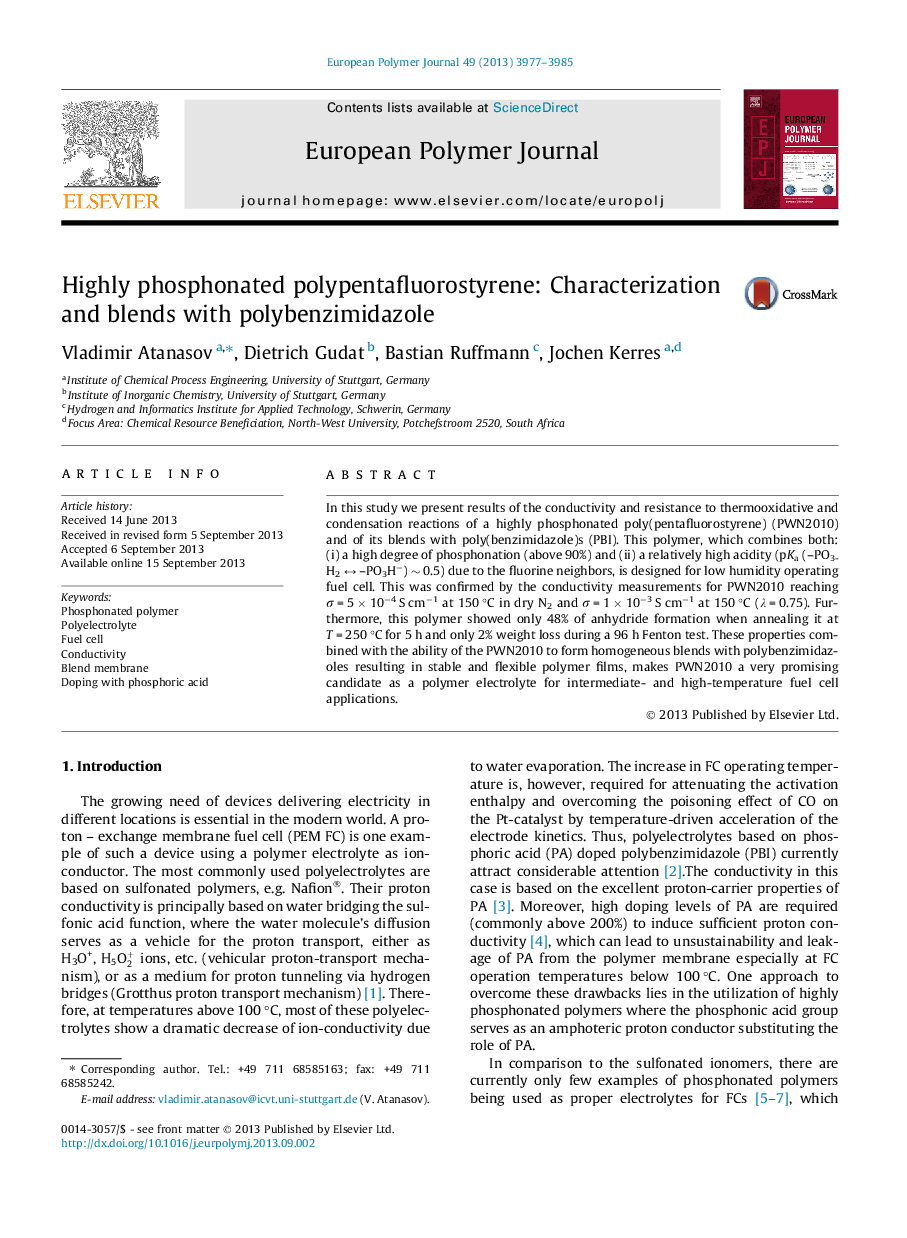| Article ID | Journal | Published Year | Pages | File Type |
|---|---|---|---|---|
| 1401942 | European Polymer Journal | 2013 | 9 Pages |
•Conductivity of PWN2010 is an order of magnitude higher than PVPA or Nafion117.•PWN2010 formed 48% of anhydride at T = 250 °C for 5 h against 90% for PVPA.•Excellent resistance against radical attack (2% weight loss in 96 h Fenton test).•Homogeneous blends with PBIOO resulting in stable and flexible polymer films.
In this study we present results of the conductivity and resistance to thermooxidative and condensation reactions of a highly phosphonated poly(pentafluorostyrene) (PWN2010) and of its blends with poly(benzimidazole)s (PBI). This polymer, which combines both: (i) a high degree of phosphonation (above 90%) and (ii) a relatively high acidity (pKa (–PO3H2 ↔ –PO3H−) ∼ 0.5) due to the fluorine neighbors, is designed for low humidity operating fuel cell. This was confirmed by the conductivity measurements for PWN2010 reaching σ = 5 × 10−4 S cm−1 at 150 °C in dry N2 and σ = 1 × 10−3 S cm−1 at 150 °C (λ = 0.75). Furthermore, this polymer showed only 48% of anhydride formation when annealing it at T = 250 °C for 5 h and only 2% weight loss during a 96 h Fenton test. These properties combined with the ability of the PWN2010 to form homogeneous blends with polybenzimidazoles resulting in stable and flexible polymer films, makes PWN2010 a very promising candidate as a polymer electrolyte for intermediate- and high-temperature fuel cell applications.
Graphical abstractFigure optionsDownload full-size imageDownload as PowerPoint slide
